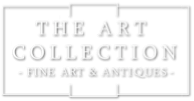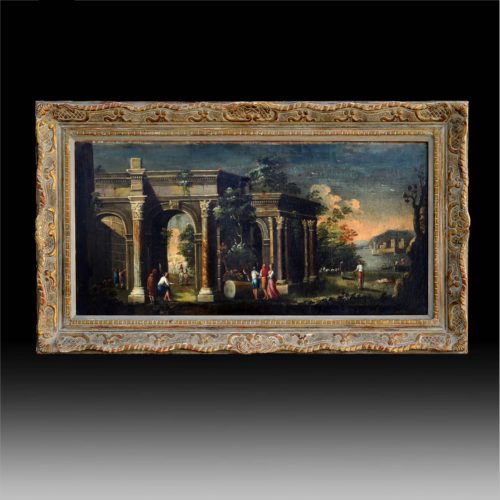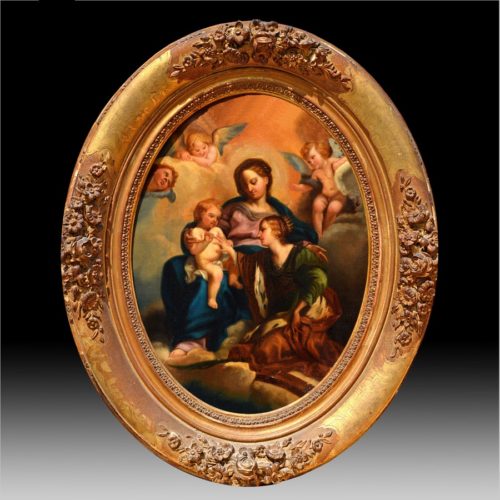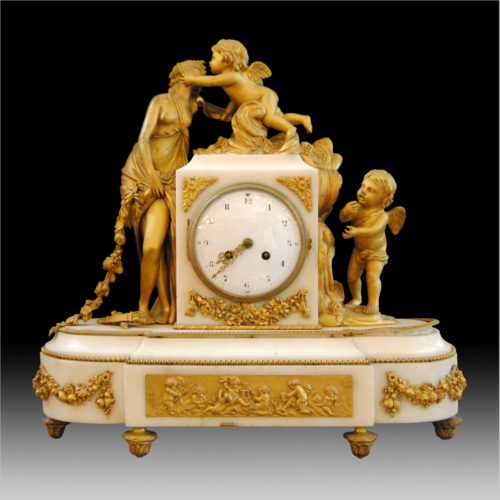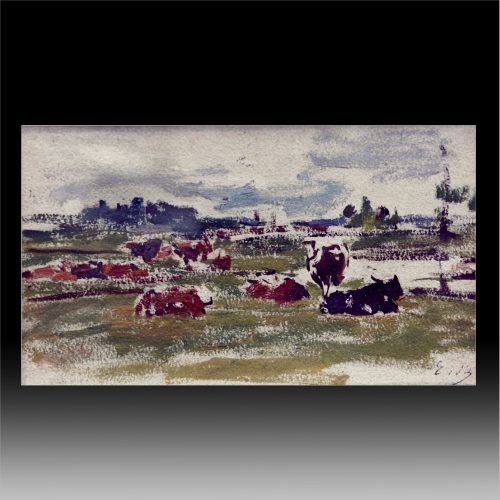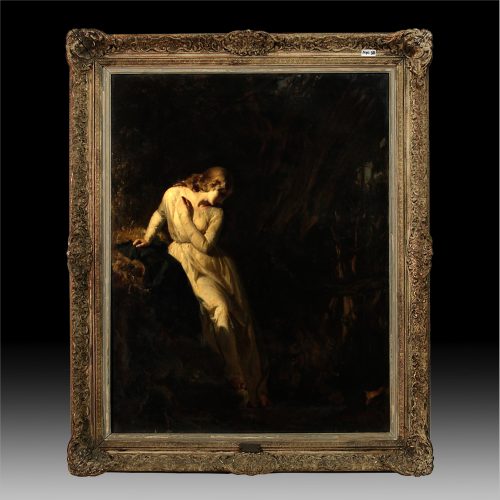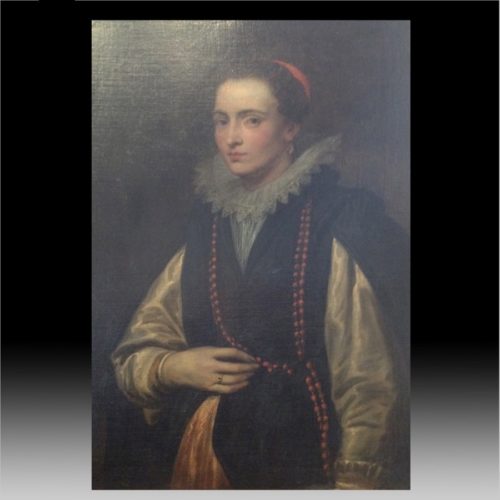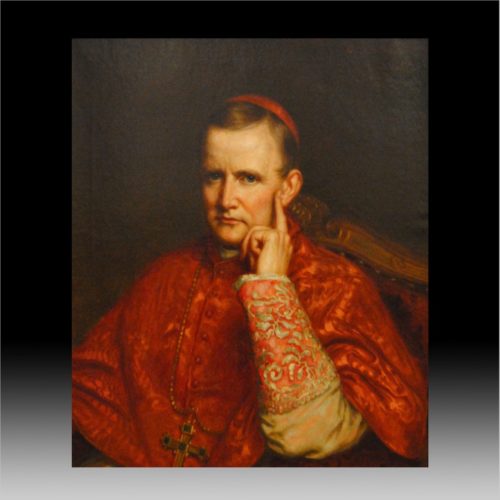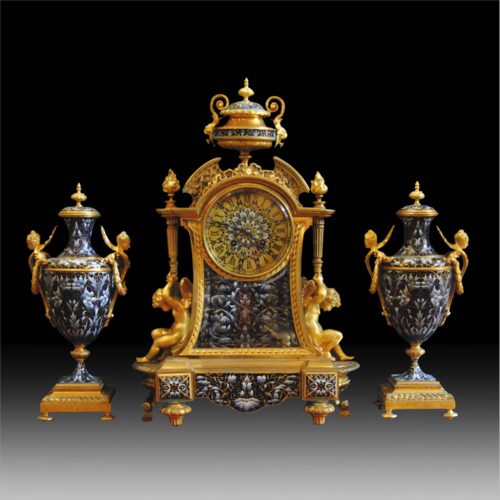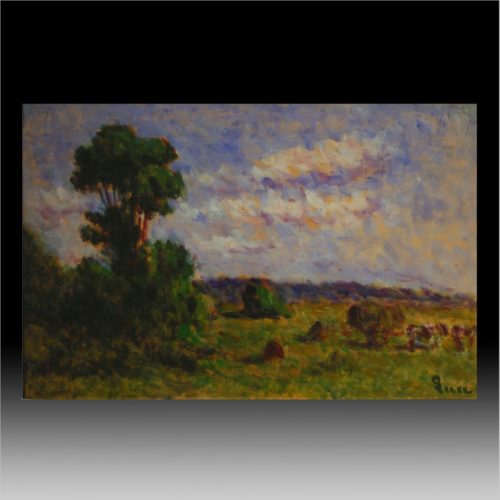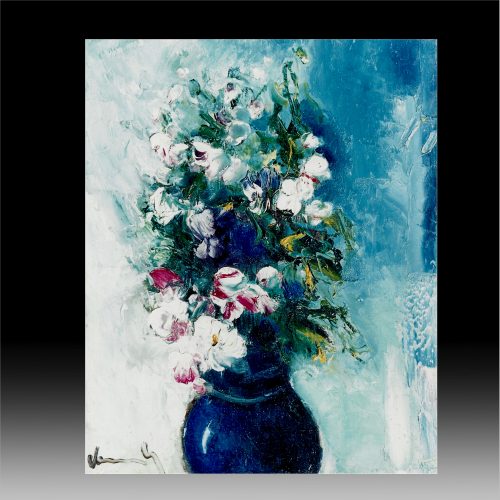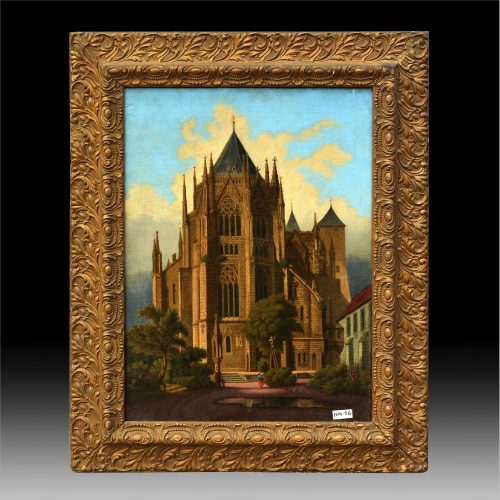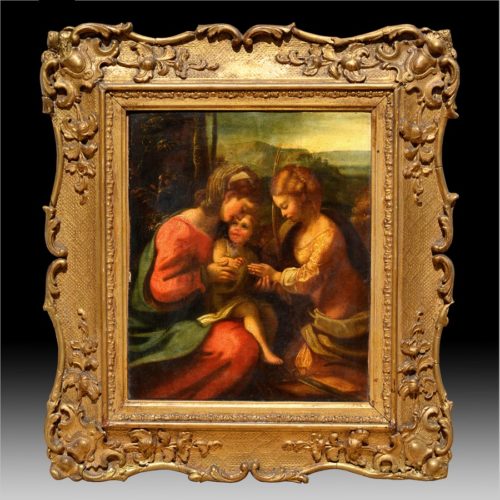-
Antonio Joli (Italian, 1700-1777) “Figures Amongst Classical Ruins” Oil on canvas 15 ¼ x 30 ½ inches (38.7 x 77.5 cm) Antonio Joli or Ioli (1700 – 29 April 1777) was an Italian painter of vedute and capricci. Born in Modena, he first was apprenticed to Rafaello Rinaldi. He then studied in Rome under Giovanni Paolo Panini, and in the studios of the Galli da Bibbiena family of scene-painters. He became a painter of stage sets in Modena and Perugia. In 1732 he moved to Venice, where he worked as stage-painter for opera productions at the Teatro di San Giovanni Grisostomo and the Teatro San Samuele of the Grimani family. In 1742 he went to Dresden, and then to London (1744–48) and Madrid (1750–54).
-
A Louis XVI Style Ormolu and White Marble Mantel Clock, circa 1880. The enameled dial with twin-train movement, within a square marble case surmounted by Cupid and flanked by Venus and a cherub, above a relief-inset marble plinth and toupee feet, on a marble base. Height: 19 inches Width: 19 ½ inches A pair of Louis XVI style ormolu and white marble figural six-light candelabra. Late 19th century. Each modeled as aputto supporting a floral-garlanded vase issuing acanthus-sheathed scrolled branches, on laurel-cast base, shaped plinth and tapering foliate-cast feet, now mounted as lamps. 26 ¾ in. (67.8cm) high, excluding fitting. CEMAR2701-100 AC15040 F-760 Candelabra: CEMAR2701-124 AC11280 F-763
-
Eugéne Boudin (French, 1824-1898) “Vaches au paturage” Oil on paper 4 ½” x 7 ¾” Stamped with initials lower right
-
Circle of Alfred Elmore, R.A. ‘Una and The Lion’ oil on canvas. 36 x 28 in. (91.4 x 71.1 cm
-
Sir Anthony van Dyck ‘Portrait of the Marchesa Lomellini-Durazzo, three quarter length, in a black Coat and white Sleeves’ oil on canvas 33 5/8 x 24 in. 85.4 x 61 cm. CL102794-266 5115602-2 @AC-sAlbert.
-
George Peter Alexander Healy 1808-1894 Portrait of Cardinal John McCloskey Oil on Canvas 25” x 30” Signed top right and dated SLOCT2281-127 AC16000
-
A Champlevé & Gilt-Bronze Clock Garniture (Set of 3 Pieces). Paris, circa 1880. The clock with Roman numeral dial above a glazed panel enclosing a stylized dark and light blue and white enamel foliate design, surmounted by a covered urn and flanked by putti upholding torches, on a shaped rectangular base and toupee feet. The clock dial is signed, E. Henry Paris; flanked by a pair of covered urn of ovoid form with handles in the form of Elizabethan maiden’s heads, on square bases and disc feet, the movement stamped 24568, striking on a bell. Clock Height: 18 ½ inches Vase Height (2): 11 inches SSP2999-353 AC43989 F-376
-
Maximilien Luce (French, 1858–1941) “La fenaison a I’lli de France” Oil on paper laid down on canvas 11 ¼”x 17 ½” Stamped lower right COA by J. Bouin-Luce Maximilien Luce (13 March 1858 – 6 February 1941) was a prolific French Neo-impressionist artist, known for his paintings, illustrations, engravings, and graphic art, and also for his anarchist activism. Starting as an engraver, he then concentrated on painting, first as an Impressionist, then as a Pointillist, and finally returning to Impressionism. Born on 13 March 1858 in Paris. His parents, of modest means, were Charles-Désiré Luce (1823–1888), a railway clerk, and Louise-Joséphine Dunas (1822–1878). The family lived in the Montparnasse, a working-class district of Paris. Luce attended school at l'Ecole communale, beginning in 1864. In 1872, the fourteen-year-old Luce became an apprentice with wood-engraver Henri-Théophile Hildebrand (1824–1897). During his three-year xylography apprenticeship, he also took night classes in drawing from instructors Truffet and Jules-Ernest Paris (1827–1895). During this period, Luce started painting in oils. He moved with his family to the southern Paris suburb of Montrouge. His art education continued as he attended drawing classes taught by Diogène Maillard (1840–1926) at the Gobelins tapestry factory. Luce began working in the studio of Eugène Froment (1844–1900) in 1876, producing woodcut prints for various publications, including L'Illustration and London's The Graphic. He took additional art courses, at l'Académie Suisse, and also in the studio of portrait painter Carolus-Duran (1837–1917). Through Froment's studio, Luce became friends with Léo Gausson and Émile-Gustave Cavallo-Péduzzi. These three artists spent time around Lagny-sur-Marne creating Impressionist landscapes.
-
Maurice de Vlaminck (French, 1876-1958) “Fleurs dans un vase bleu” Oil on canvas 18”x 14” Signed lower left COA by Wildenstein Institute
